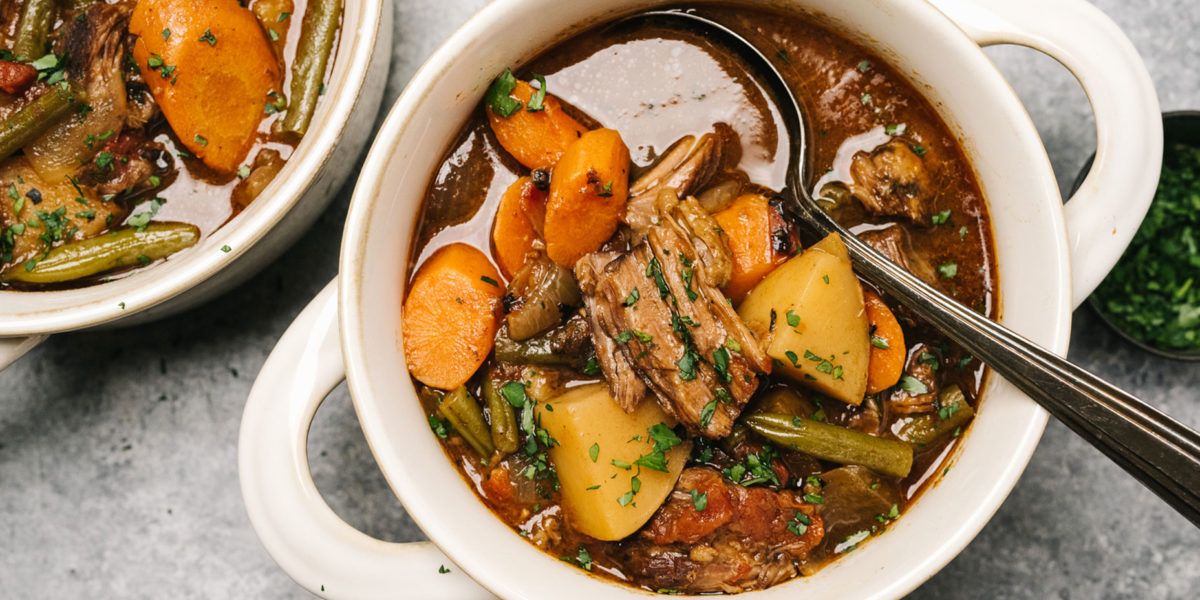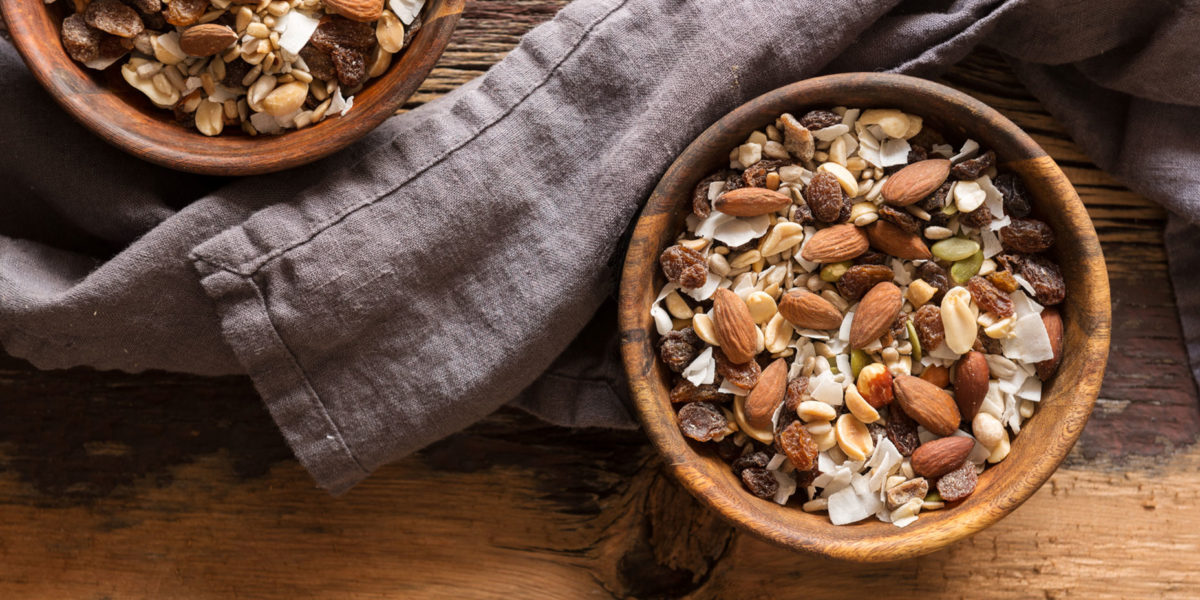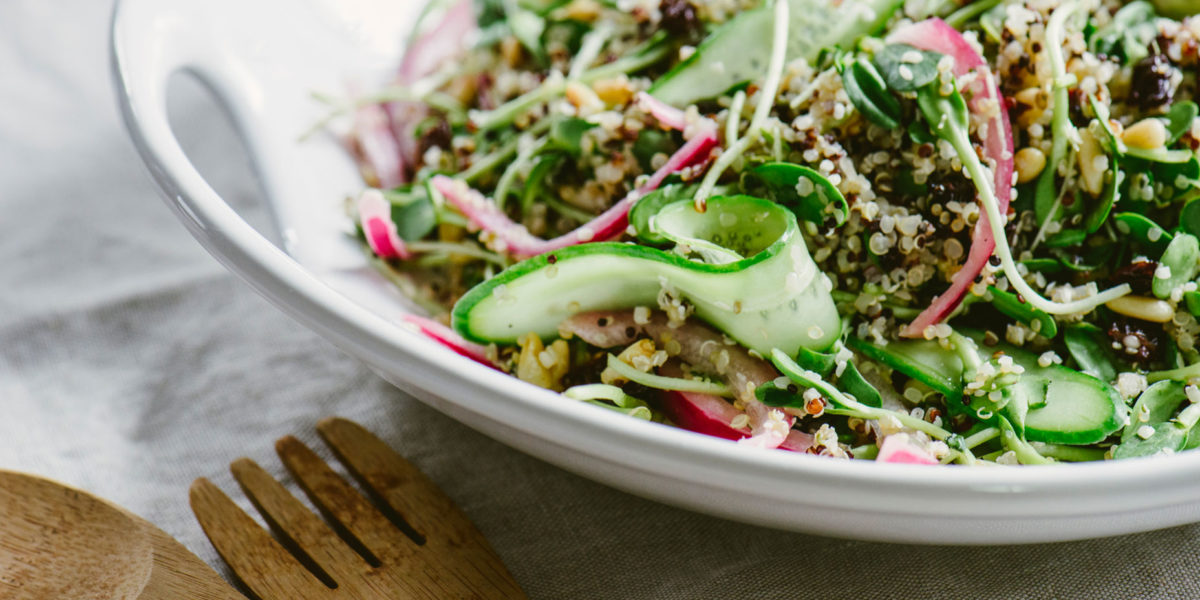Many people are increasing their intake of plant-based protein these days, trading in some meat and dairy for bean and whole grain options and favoring a handful of nuts and seeds over snacks of highly processed chips, crackers, or cookies.
While you know increasing your intake of legumes and whole grains is an excellent idea, you may have heard that phytates, potential “anti-nutrients” lurking in plant foods, will rob you of the minerals they contain. Should you be concerned?
If you follow a vegan or vegetarian diet, maybe. Otherwise, no.
In this article, we’ll discuss phytates; what they are, where they are, what they do for your body, and how to best prepare your foods to get their benefits while also optimizing nutrient absorption.
And we’ll talk about a couple of minerals someone following a vegan or vegetarian diet may need to consume in greater amounts to ensure nutrient adequacy.
What Are Phytates?
Phytates are compounds in plant foods that serve as a storage form of plant phosphate, an energy source for the plant, and as an antioxidant that enhances the plant’s defenses.
The terms phytates and phytic acid are often used interchangeably, but they do refer to different compounds in plants. Phytic acid holds the potential to bind a mineral, while phytates have already bound one. In other words, phytic acid becomes a phytate once it has bound a mineral.
Although phytates come with a host of benefits, they’re often considered “anti-nutrients” because of their ability to bind to minerals. This occurs because the phosphates that are components of phytates act as strong chelators or binding agents which have an affinity for positively charged minerals, like copper, calcium, zinc, and iron[1].
Phytates are present in a wide range of plant foods:

Foods High in Phytic Acid
- Grains (wheat, rice, barley, sorghum, oat, rye, millet, triticale, wild rice)
- Oil-containing seeds (sunflower kernels, sesame seeds, linseed, canola or rape seeds) and nuts (hazelnuts, walnuts, almonds, cashews, peanuts, Brazil nuts, pistachios, macadamia, pecans, pine nuts)
- Legumes (beans [including soybeans and products made from them], peas, and lentils).
- Tubers (potatoes, beets, carrots, turnips)
What Do Phytates Do in The Body?
Phytates protect plants with their strong antioxidant defenses and also serve as a source of energy. Unsurprisingly, these beneficial plant effects also produce a wide range of positive effects in the human body.
- Phytates act as powerful antioxidants and provide significant anti-inflammatory effects. These plant compounds are even known to reduce the risk for certain cancers, including breast and colon cancer.
- Due to their anti-inflammatory activity, phytates may reduce the risk for inflammatory bowel disease.
- By protecting against inappropriate calcification, phytates prevent calcium from depositing in our blood vessels and lower our risk of developing kidney stones.
- Phytates promote cardiovascular health, improving the overall lipid profile by increasing HDL, lowering oxidized LDL, and lowering triglycerides.
- Phytates assist in blood sugar control by reducing intestinal absorption of glucose and fat, while also increasing insulin sensitivity.
- Due to their ability to stimulate the production of nitric oxide, phytates help relax blood vessels, improving blood flow and nutrient delivery throughout the body.
- And finally, phytates bind to toxic minerals — e.g., lead, cadmium — preventing their absorption and escorting them out of the body via stool.
Phytates and Bone Health
Contrary to popular belief, phytates have a particularly beneficial impact on bone mineral health.
The positive impact of phytates on bone health comes from their ability to inhibit the breakdown of the calcium phosphate mineral complex in your bones called hydroxyapatite. This complex makes up approximately 65% of your bones and plays a crucial role in the structure and strength of your bones.
Research shows that increased consumption of phytates is related to higher bone mineral density and, therefore, daily consumption of phytate-rich foods (at least one serving/day of legumes or nuts) may help to prevent or minimize bone-loss disorders, such as osteoporosis. [6].
Do Phytates Inhibit Calcium Absorption?
Phytic acid does, in fact, bind minerals such as calcium, zinc, magnesium, and iron. And while some animals produce the enzyme phytase, which allows the bound minerals to be liberated and absorbed, humans don’t. So, to answer the question, “Do phytates inhibit calcium absorption?” the simple answer would be “yes,” but the story isn’t so simple.
While phytates do bind to calcium, research shows that people who consume a diet primarily consisting of plant foods don’t end up with the nutrient deficiencies you would expect from a phytate-rich diet[7][8].
How could this be?
A variety of factors likely play a role, including individual metabolism and cooking methods. While phytates are able to bind minerals, it appears that the overall amount of minerals bound by these “anti-nutrients” is not large enough to result in nutrient depletion. Furthermore, when foods that contain phytates are cooked, they lose a great deal of their phytic acid content, which means that even if a food is considered high in phytates, that may no longer be the case once the food is prepared. And who eats uncooked legumes or whole grains?

All in all, studies show that when we consume a diverse and balanced diet, the likelihood of phytates impairing our mineral status is very low[1]. Those following a vegan or strict vegetarian diet are the one possible exception to this rule.
If organically grown, whole foods are chosen and prepared at home using the cooking techniques described next (presoaking, etc.), which both lower phytate content and improve mineral bioavailability, a vegan or vegetarian diet can provide excellent nutrition. However, because of the diet’s phytate content and its lack of animal-derived foods rich in bio-available iron and zinc, a vegan or vegetarian may need more than the RDA of these two minerals to prevent insufficiency[15].
To meet a vegan or vegetarian’s increased requirements, the IOM (Institute of Medicine) recommends:
- Iron’s RDA should be multiplied by 1.8
- Zinc’s RDA should be multiplied by 1.5
Regarding iron, other experts in the field recommend simply enhancing non-heme (plant) iron absorption by consuming iron-rich plant foods along with vitamin C, and when eating iron-rich meals, reducing consumption of other dietary inhibitors of iron absorption, i.e., the tannins found in tea, coffee and cocoa. Enjoy your tea, coffee or cocoa an hour or so before or after your iron-rich meal.
Zinc, however, is a special case due to its already poor bioavailability. Vegans should frequently consume zinc-rich foods such as hemp, pumpkin seeds, nutritional yeast, oats and other grains, nuts and beans, and use the cooking methods described next that improve mineral absorption. Even so, if 12 mg/d cannot be easily provided by your diet, supplemental zinc may be a wise option.
How to Reduce Phytic Acid in Food
Phytates can easily be reduced through food preparation and cooking processes, including fermentation, soaking, and germination. Once your phytate-rich foods have undergone these processes, their phytate content and ability to bind minerals will be significantly reduced, enhancing the nutrient absorption of your meal[9].
Fermentation
Fermentation involving lactic acid bacteria can lower the phytate level in grains between 12-51%, depending on the type of grain. Furthermore, studies show that consuming fermented vegetables along with high-phytate foods can also increase mineral absorption by lowering overall active phytate levels[10][11].
Cooking
Cooking your foods will also degrade some of the phytic acid content. For example, studies show that cooking legumes for one hour at 95 °C results in somewhere between a 23% and 80% loss in phytic acid[12].
Soaking
Soaking seeds and legumes is a common practice for enhancing nutrient bioavailability and is the easiest way to go about it. Soaking foods in fresh water for 24 hours, then draining and replacing with fresh water before cooking, can reduce phytate levels by up to 23%, after which cooking will lower them even more.
While soaking may also result in a slight loss of iron and zinc,[13], it’s easy to not just replenish but increase the content of both when cooking the soaked seed or legume. Simply add a teaspoon of ascorbic acid (vitamin C) and a piece of dried kombu (seaweed) to your cooking water. Kombu is loaded with minerals, which will then be absorbed by the seed or legume while cooking. Vitamin C, specifically, boosts the absorption of nonheme iron (Fe3+, the form in which iron is found in plant foods) by donating an electron and reducing it to Fe2+, which is the only form in which iron can be absorbed by our enterocyte cells (the absorptive cells that line the inner surface of our small and large intestines)[16].
Germination
Germination or sprouting can also enhance plant foods’ nutrient bioavailability by activating phytases (enzymes) within the foods that then liberate phosphates from the phytate complex and therefore put an end to its mineral-binding properties. Sprouting is a particularly helpful way to preserve the mineral content of your food[14].

Takeaway
While it’s true that phytic acid may bind some minerals, including calcium, this “anti-nutrient” is truly anything but. Phytate not only enhances your antioxidant defenses and lowers inflammation but can enhance your bone health and help prevent bone diseases like osteoporosis.
If you’re worried about the phytate content of your meals, keep in mind that the way you prepare and cook phytate-containing foods can significantly reduce their phytic acid content, render the nutrients they contain more bioavailable and even enrich the mineral content of the cooked food.
For more tips about bone health and aging well, sign up for the AlgaeCal Newsletter, where you’ll receive the latest news and research to guide your healthy living practices.
FAQs
What do phytates do in your body?
Phytates act as antioxidants, protect against calcification (where it doesn’t belong), are anti-inflammatory, bind toxic metals, stimulate the production of nitric oxide, assist in blood sugar regulation, and protect bone and cardiovascular health.
Are phytates harmful?
While phytates can bind to minerals like calcium, for most people they don’t bind enough to produce a mineral deficiency. Those following a vegan or strict vegetarian diet are the one possible exception to this rule. Due to the diet’s phytate content and its lack of animal-derived foods rich in bio-available iron and zinc, a vegan or strict vegetarian may need more than the RDA of these two minerals to prevent insufficiency.
What foods are high in phytates?
Phytates are found in a range of plant foods. Some of the plants with the highest levels of phytates include grains (like wheat, rice, and barley), legumes (including beans, peas, and lentils), nuts, seeds, and tubers (such as potatoes, beets, and carrots).
How do you get rid of phytates?
You can reduce phytates in your food through various preparation methods, including fermentation, cooking, soaking, and germination. You can also find some legumes and grains pre-sprouted, which will naturally reduce their phytate content.
References
- Petroski, Weston, and Deanna M. Minich. “Is there such a thing as “anti-nutrients”? A narrative review of perceived problematic plant compounds.” Nutrients 12.10 (2020): 2929.
- Cohen, L. A. “Dietary fiber and breast cancer.” Anticancer research 19.5A (1999): 3685-3688.
- Fuster, Juan Manuel Buades, et al. “Plant phosphates, phytate and pathological calcifications in chronic kidney disease.” Nefrología (English Edition) 37.1 (2017): 20-28.
- de Melo Ribeiro, Priscila Vaz, et al. “Dietary non-nutrients in the prevention of non-communicable diseases: Potentially related mechanisms.” Nutrition 66 (2019): 22-28.
- Schlemmer, Ulrich, et al. “Phytate in foods and significance for humans: food sources, intake, processing, bioavailability, protective role and analysis.” Molecular nutrition & food research 53.S2 (2009)
- Sanchis, Pilar, et al. “Understanding the Protective Effect of Phytate in Bone Decalcification Related-Diseases.” Nutrients 13.8 (2021): 2859.
- Gibson, Rosalind S. “Content and bioavailability of trace elements in vegetarian diets.” The American journal of clinical nutrition 59.5 (1994): 1223S-1232S.
- Hunt, Janet R. “Moving toward a plant-based diet: are iron and zinc at risk?.” Nutrition reviews 60.5 (2002): 127-134.
- Gupta, Raj Kishor, Shivraj Singh Gangoliya, and Nand Kumar Singh. “Reduction of phytic acid and enhancement of bioavailable micronutrients in food grains.” Journal of food science and technology 52.2 (2015): 676-684.
- Castro‐Alba, Vanesa, et al. “Fermentation of pseudocereals quinoa, canihua, and amaranth to improve mineral accessibility through degradation of phytate.” Journal of the Science of Food and Agriculture 99.11 (2019): 5239-5248.
- Scheers, Nathalie, et al. “Increased iron bioavailability from lactic-fermented vegetables is likely an effect of promoting the formation of ferric iron (Fe3+).” European journal of nutrition 55.1 (2016): 373-382.
- Shi, Lan, Susan D. Arntfield, and Michael Nickerson. “Changes in levels of phytic acid, lectins and oxalates during soaking and cooking of Canadian pulses.” Food Research International 107 (2018): 660-668.
- Lestienne, Isabelle, et al. “Effects of soaking whole cereal and legume seeds on iron, zinc and phytate contents.” Food chemistry 89.3 (2005): 421-425.
- Duhan, A., N. Khetarpaul, and S. Bishnoi. “Changes in phytates and HCl extractability of calcium, phosphorus, and iron of soaked, dehulled, cooked, and sprouted pigeon pea cultivar (UPAS-120).” Plant Foods for Human Nutrition 57.3 (2002): 275-284.
- Rogerson, David. “Vegan diets: practical advice for athletes and exercisers.” Journal of the International Society of Sports Nutrition 14.1 (2017): 36.
- Piskin, Elif, et al. “Iron absorption: factors, limitations, and improvement methods.” ACS omega 7.24 (2022): 20441-20456.






Jodi Dann
February 19, 2023 , 8:09 amI enjoyed this article, but not being a scientist or nutritionist I found this information about phytates to be confusing and contradicting.